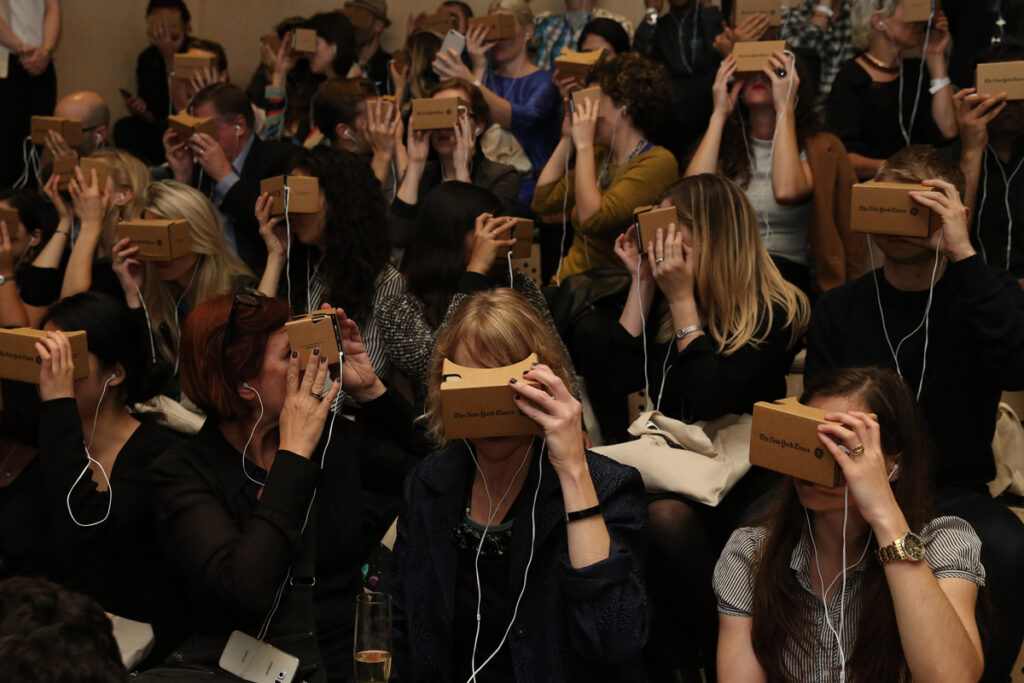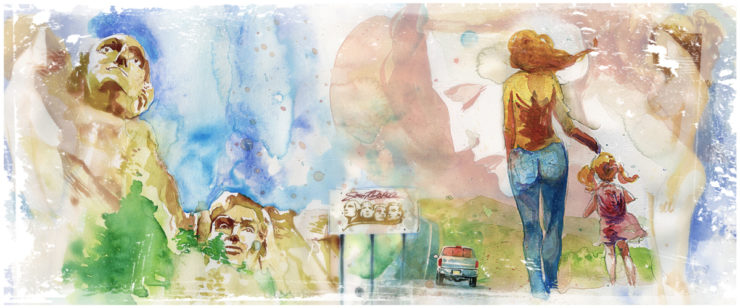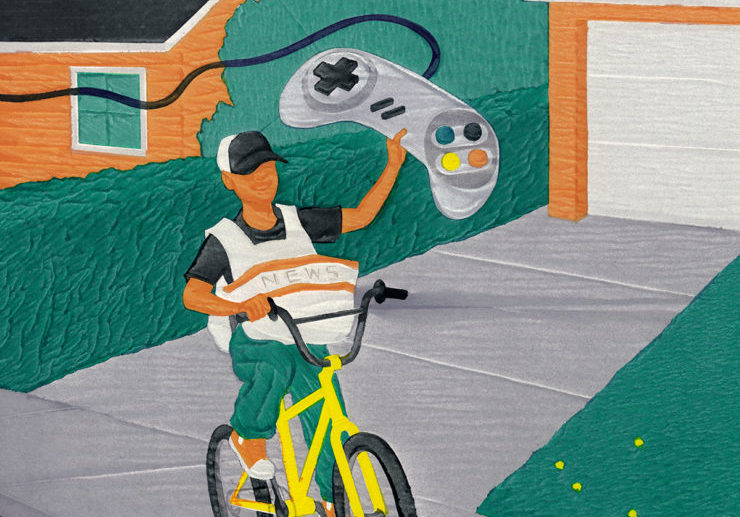You’re looking at a map of New York City when a red stick figure drops on the corner of Nostrand and Atlantic in Brooklyn. “Lauren is having a heart attack!” To save her, you must get her to the nearest hospital. But as you do, several more stick figures fall from the sky, calling for your attention. Some will live; some will die. By the end of the game, the bodies are falling faster than you can save them. “You saved 7 out of 26 lives, and 10 still need to get to a hospital.”
This is HeartSaver, a game built in two days by developers and journalists from ProPublica at a hackathon organized by the Editors Lab at the Global Editors Network in New York in 2013. Using data from the Centers for Medicare & Medicaid Services, the game helps users better understand how the time it takes to get to a hospital can impact survival chances during a heart attack.
When the ProPublica team showed up at the hackathon, they first thought about simply building a tool that would let people plug in their addresses to find out how long it would take them to get to a hospital. But Sisi Wei, a journalist at ProPublica and one of the designers of HeartSaver, wanted to try something different. “How can we make this experience last longer than one input?” she wondered. “What can we do to help people understand the situation of folks who don’t live or work near them?” A newsgame was her answer.
Games are not new to journalism. Crossword puzzles have been a beloved part of newspapers for almost as long as there have been newspapers, and some of BuzzFeed’s most popular features are its quizzes and listicles, which can be substantive as well as trivial. The BuzzFeed News app, for example, offers a weekly quiz that tests readers’ knowledge of world events, and the company also just launched an app called QuizChat, which integrates with Facebook Messenger and allows users to take quizzes with their friends. Recently BuzzFeed launched a choose-your-own adventure game to help describe mental health issues in which players must navigate a day with depression. The Washington Post is experimenting with chat apps like Kik to create trivia games; The New York Times Magazine mailed its subscribers a cardboard headset so they could watch “The Displaced” documentary on the global refugee crisis in 3D; and in its recent ad for a deputy director of data visualization the Los Angeles Times listed “Unity or Unreal game engines,” which are used for games and virtual reality systems, under preferred job skills.
As digital technology allows more and more of our lives as consumers to be framed as play, scoring points or competing with others, companies of all kinds have been incorporating games into their strategies. Power suppliers rate your energy efficiency compared to other households in your neighborhood; health insurance companies encourage you to rack up points by exercising and staying active; Foursquare encourages users to regularly check into their favorite spots so they can “win” and be named the mayor.
For journalists, games offer compelling storytelling possibilities. They can simulate complex systems, where different choices create different outcomes. They can create a sense of emotion and urgency in players. And they can connect people with experiences they may never have in actual life. “Our job as journalists is to inform the public,” says Wei. “By using emotion and empathy, games allow us to inform readers in a new way, one they both remember and understand.”
Despite the popularity of games—the Entertainment Software Rating Board states that 67 percent of American households play video games, and game sales now surpass movie box office receipts every year—and regular bursts of excitement around the ways games could help journalists tell stories, they’ve never quite taken off in journalism. Game design is hard, and it’s often time-consuming and expensive, taking resources away from other newsroom priorities. But as journalistic outlets seek to attract younger users—and audience engagement measures displace simpler metrics like unique visits and pageviews—games may present new opportunities to reach and retain audiences. “The norms by which audiences receive and appraise journalism are clearly changing,” says Maxwell Foxman, who authored a 2015 report on newsgames for the Tow Center for Digital Journalism at Columbia University. “New media companies that have a news focus can be more flexible, because they’re not trying to fit games into the traditional news structure.”

Activist organizations, which don’t have a traditional news structure but, like newsrooms, do have missions to inform the public, are using games to powerful effect. In his Tow report, Foxman cites Darfur is Dying, a joint project released in 2006 by mtvU, MTV’s university channel, the Reebok Human Rights Foundation, and the International Crisis Group, as an outstanding example of the genre. Darfur is Dying is a relatively simple, Flash-based game that asks players to pick a role in a displaced Darfuri family: mother, father, or one of six children between the ages of 10 and 14. Then players go through the basic tasks required to survive in a refugee camp—forage for food, find water—all while militias periodically roll through to attack the camp. Last year, independent game developer Lucas Pope won a slew of awards, including a Video Game Award from the British Academy of Film and Television Arts, for Papers, Please, in which players take on the role of an immigration officer working the border of a fictional country called Arstotzka in 1982.
In 2011, game design consultancy Antidote Games developed Broken Cities for the Nordic Council for Climate Change as an educational tool for climate scientists, many of whom expressed confusion and frustration as to why the public wasn’t doing more to stop climate change. The game’s challenge: Build a new city in Scandinavia, balancing development priorities with environmental concerns, kind of like a simplified SimCity with a sustainability bent. When the climate researchers had to decide between building low-cost, environmentally unfriendly housing and costlier green housing, “many of them did the dodgy, unethical stuff that people in the real world did,” according to Antidote Games co-founder Ida Benedetto. As a result, they better grasped the motivations of those whose behavior they previously didn’t understand. “News isn’t just about conveying information,” says Benedetto. “It’s about getting people to understand a situation, and I can’t think of any better way to do that than by dropping them into a situation and having them figure it out.”
“Games are models,” says Ian Bogost, game designer and, with Simon Ferrari and Bobby Schweizer, author of “Newsgames: Journalism at Play.” “They represent systems within systems, so you can depict the complex machinery of the world in a complex way.” Trouble is, games are also complex to make, and that has often been an obstacle to wider uptake of this storytelling genre.
Shannon Perkins, editor of interactive technologies at Wired, built Cutthroat Capitalism: The Game as an accompaniment to a piece in the July 2009 issue of the magazine on the economics of being a Somali pirate. In the game, you’re a pirate commander, sailing around the Gulf of Aden. You’ve been given $50,000 from your tribal leaders and a handful of other investors. As you sail, you have to choose which ships to attack, and how to negotiate ransom from those ships. When you seize a ship, you learn how large the crew is, its ethnic makeup, the type of boat and the value of what it’s carrying. As you negotiate, you can feed your captives or kill them.
A game about Somali pirates made an abstract topic personal for Wired readers
For Perkins, the game was an interesting way to explore morality and to personalize a topic the vast majority of Wired’s readers would never actually encounter. “There were some rules but there were also some things where you would look inside yourself as a human being: How do you feel about that?” Perkins says. It was also an experiment, done after hours. From conception to release, Perkins had eight weeks to put the game together, on top of his other duties of getting the magazine online. He was up almost every night. His girlfriend even moved out. Luckily, the game did well, staying in the top 100 articles for over a year. Other games were less successful, and Perkins started to feel disillusioned, eventually leaving Wired to pursue his own projects.
Perkins’s frustration is common for those trying to make games in newsrooms. Games take a long time to create. They require testing and iterations. And their development doesn’t necessarily sync up with the news cycle. Even the language of game design studios and newsrooms is different. Foxman cites the word “failure” as a case in point: “Game designers expect failure, whereas obviously the idea of failure is an incredibly big deal in journalism. It means that you got something wrong. That becomes problematic when you put those two people in a room together.”
Plus, Foxman argues, newsroom culture has not traditionally been comfortable with ideas of play. In his Tow report, Foxman wrote about Retha Hill, director of the Cronkite School’s New Media Innovation and Entrepreneurship Lab at Arizona State University, who said only 5 to 10 percent of her journalism students said they played games at all, in contrast to the general population of people their age, of whom about 30 percent play games. At The New York Times, Sam Dolnick, an associate editor, said he’s convinced the publication’s first virtual reality product, generally seen as a game-like medium, had to be substantive and serious. “We don’t see this as a gimmick, and we didn’t want readers to dismiss it that way,” Dolnick says.
Some journalism schools are integrating game design into their curricula, including the New Media Innovation and Entrepreneurship Lab that Hill runs, Arizona State’s Center for Games and Impact, and Northeastern University’s School of Journalism’s Media Innovation Program, where one concentration is game design. Northeastern students recently partnered with Esquire to come up with new ways to retell a 2011 feature in which journalist Luke Dittrich walked the entire 1,933-mile border between the United States and Mexico. One of the proposals was a game, in which the user controlled an animated Dittrich figure. As the players moved along the trail, they were faced with choices about where to pitch a tent, whether to explore a mountain range, or whether to talk to a border guard or not.
Even at places ready to experiment, like BuzzFeed, the relationship between game designers and the rest of the editorial team is still in flux. Foxman devoted a chapter of his Tow report to the BuzzFeed games team, but that team has since been disbanded and its members dispersed around BuzzFeed, some on the editorial side and some of the advertising side. BuzzFeed’s latest game endeavor: a Puzzles section full of non-news-related crosswords.
The Washington Post recently launched a collaboration with mobile messaging app Kik, in which Post journalists use Kik to create trivia bots with which users can actually converse. In a geography quiz, for example, the bot might offer a multiple-choice question about the tallest mountain in the world. If the user says the correct answer (Everest), the bot sends a link to a Post story about Everest. Winning users also receive rewards, such as a NCAA March Madness emoji or “Game of Thrones” illustrations. “Kik jumped out at us because it gave us the flexibility of building something fun and informative for a young audience,” says Ryan Kellett, audience and engagement editor at the Post. “We’ve learned a lot about structuring the experience to invite users to move the game forward themselves instead of us delivering everything we have at once.”
Marcus Bösch, who runs a small game design studio called The Good Evil in Cologne, Germany, has found a way to make even more ambitious newsgames work. With clients like the “Heute-Show,” a German version of “The Daily Show,” he develops games around current topics in the news, and says he can deliver a browser-based game in five days, at a cost of $7,000 to $10,000.
The Good Evil’s most recent game for “Heute-Show” had to do with metadata—the digital information created every time you make a call, send an e-mail or click on a website. It was based on the old pre-smartphone game Snake, in which players navigated a “snake” around the screen to devour little blocks. In the new game, players maneuver a chomping face over floppy disks, Twitter icons, and phones, which then follow the face around the screen, showing how metadata from tweets, phone calls, and Web surfing pursues them around the Internet. The game took about two weeks to make, and Bösch says the “Heute-Show” digital team has decided to explore more interactive formats.

News outlets don’t need a whole game design studio to make something game-like, though. In February, Fusion released Fertile Ground, “an interactive journey through an unintended pregnancy” that takes readers through the options available to a young South Dakota woman. The game is simple: Choose what to do as the options appear. Do you stay with the child’s father, whom you barely know, or go it alone? Do you take the 7.5-hour bus ride to the abortion clinic that can see you soon, or do you wait 20 weeks to be seen at the clinic closer to you? Accompanied by watercolor illustrations, the game conveys an increasing sense of despair and isolation as none of the options seem to be good ones.
Fertile Ground was written not by a game designer, but by an author. Sara James Mnookin had published several interactive books, in which readers’ choices influence the unfolding plot. She told Felix Salmon, who at the time worked at Reuters, about one of those books, and when Salmon moved to Fusion, he got in touch about doing a similar story for the site. Mnookin and the Fusion Interactive Team put the piece together over the course of nearly three months. “I am looking forward to Fusion exploring new and interesting forms of journalism,” Salmon says of Fertile Ground. “Fusion absolutely stands for experimenting with different forms of storytelling.”
The culture of game designers is one that accepts the need for failures and iterations
The New York Times’s Dolnick regards “The Displaced” project as a virtual reality version of an interactive story. “There’s a way to watch this where every time is different,” he says. One of the scenes in the documentary is of a food drop in South Sudan, where people run toward white bags dropped into a field from above. Viewers can watch that scene and focus on a different person every time—a mother running to get food for her children, for example—and as a result, each viewing feels different. “That’s an incredibly exciting storytelling device,” Dolnick says. “In traditional journalism we make the decision for you, and you have no choice. Here, we’re giving the viewer back that choice, and that’s a really exciting and empowering development.”
It’s a costly and time-consuming development, too, and one not many news organizations can afford. Going forward, The Times plans to apply the virtual reality experience to a wide range of subjects. “We think that more quick return stuff that can more quickly report the news is definitely in our future,” says Jake Silverstein, editor in chief of The New York Times Magazine. A week after the ISIS attacks in Paris, the paper produced a virtual reality film from footage of candlelight vigils in the city.
According to Foxman, one reason newsrooms might be discouraged from creating games is, in fact, the focus on blockbusters. Not every title has the resources of The New York Times to put behind a game, but many could instead develop smaller projects and try to make their organizations more playful as a whole. “Rather than looking for a specific news game, injecting play into what might be considered more traditional news packages is an interesting and beneficial step to getting on this path to newsgames,” he says.
At that 2013 hackathon where ProPublica first developed HeartSaver, newsrooms came up with other interesting games—The Wall Street Journal proposed Helicopter Ben (“It’s 2007, the economy is out of control, and you’re Ben Bernanke. Hang on to your hat as you ride the Dow and use all the tools at the Fed’s disposal to save American workers from losing their jobs”), Digital First Media created The Waffler, where players are put in the shoes of a politician trying to answer questions about their position in a campaign, The Associated Press made a magnetic poetry-style app from which players could rearrange words from AP headlines and vote on their favorites.
None of those games was actually published, but at ProPublica, editors gave Wei and her team time at work to polish up the code and publish HeartSaver on the site. Now, Wei is working on a new game, the nature of which is still under wraps, to come out in 2016. And she has serious ambitions for the new game, and for newsgames as a whole: “I want to prove to the entire industry that games can be a path for journalists to use to teach things that are engaging in a different way.”


